|
 |
|
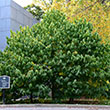
The PawPaw tree is a native of the Eastern U.S. and can grow from 15-30' tall and wide. It produces a mildly sweet, yellow-greenish fruit in mid-late summer that is great for raw eating and baking.
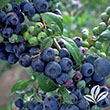
The 'Bluecrop' is a cold-hardy, disease resistant variety that produces abundant crops of large berries. Fruits will ripen in mid-July and are great for preserves, baking, freezing and fresh eating. This variety gets 4-6' tall and wide and will produce a larger crop when planted with other vareities. Does best in organically rich soil.
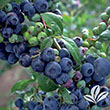
The 'Bluecrop' is a cold-hardy, disease resistant variety that produces abundant crops of large berries. Fruits will ripen in mid-July and are great for preserves, baking, freezing and fresh eating. This variety gets 4-6' tall and wide and will produce a larger crop when planted with other vareities. Does best in organically rich soil.
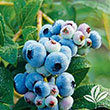
The 'Blueray' produces large, firm berries with extra sweetness, making them great for fresh eating and baking. Fruit will ripen mid-July, and this variety will bear a larger crop when paired with other pollinators. Can get up to 6-8' tall and wide, but can be pruned in late winter to maintain a managable size. The 'Blueray' is a great pollinator for other varieties. Does best in organically rich soil.
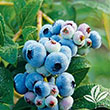
The 'Blueray' produces large, firm berries with extra sweetness, making them great for fresh eating and baking. Fruit will ripen mid-July, and this variety will bear a larger crop when paired with other pollinators. Can get up to 6-8' tall and wide, but can be pruned in late winter to maintain a managable size. The 'Blueray' is a great pollinator for other varieties. Does best in organically rich soil.
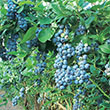
The 'Chippewa' is a compact, upright variety that is great for small garden spaces. It will get 3-4' tall and wide, and produces sweet, juicy berries that will ripen in mid-summer. Berries are great for baking, cooking, fresh eating and preserves. Brilliant orange-red fall foliage and white flowers emerging mid-spring create interest all year round. Will do best when planted in organically rich soil amongst other blueberry varieties.
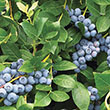
Duke Blueberry. Duke' is a late bloomer and early-ripener, producing beatiful pinkish-white flowers in late spring and large, flavorful berries that ripen late-May to early-June. It produces consistently abundant crops and flourishes when paired with other pollinating varieties. This plant will reach 4-6' tall and wide and its extremely large berries have been known to grown as large as a quarter. Their tangy-sweet flavor makes them great for fresh eating, preserves and baking.
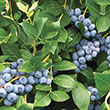
Duke' is a late bloomer and early-ripener, producing beatiful pinkish-white flowers in late spring and large, flavorful berries that ripen late-May to early-June. It produces consistently abundant crops and flourishes when paired with other pollinating varieties. This plant will reach 4-6' tall and wide and its extremely large berries have been known to grown as large as a quarter. Their tangy-sweet flavor makes them great for fresh eating, preserves and baking.
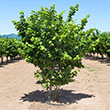
The American hazelnut produces abundant crops of small, sweet tasting nuts that are easy to crack. It has an upright, wide-spreading habit and will grow 15-18' tall and 10-12' wide. Best crop when planted with pollinating varieties.

Morus rubra, or Red Mulberry, is a deciduous tree that may grow to 30 feet with a short trunk about 2 feet in diameter and a dense, spreading crown.The Red mulberry is best grown in rich, moist, well-drained soils in full sun to part shade. It will be at its best in full sun. Prune in late fall or winter to avoid bleeding.